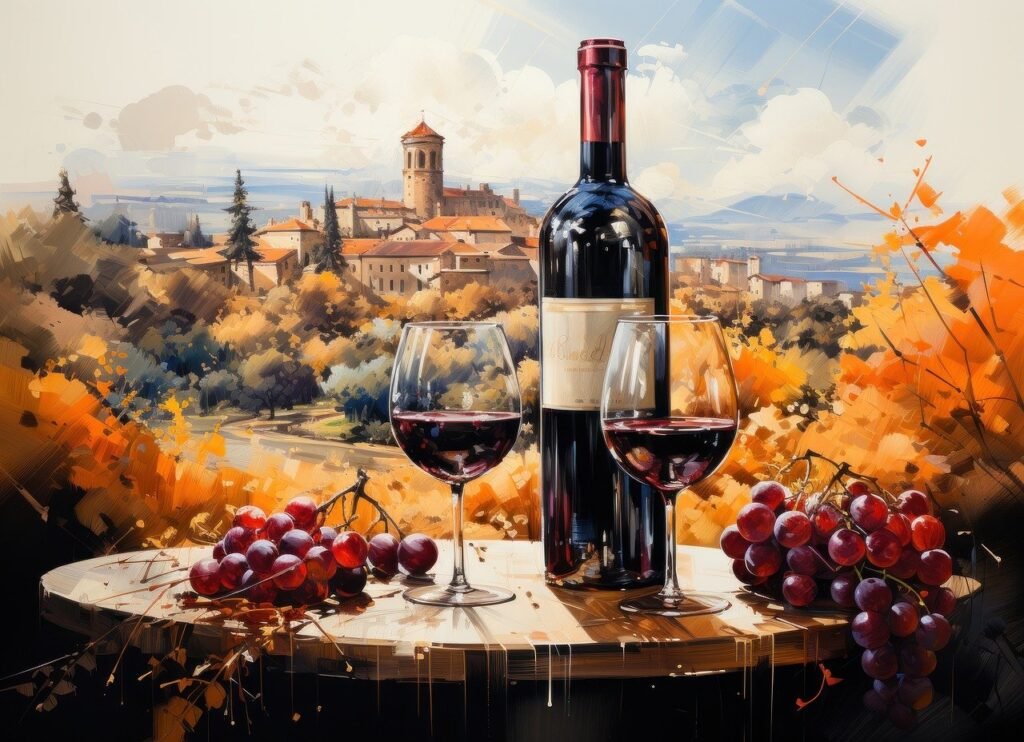
How red wine is made
I have long believed that being a winemaker is somewhere between being a genius and being insane. There are so many factors is making wine which can mean you end up with a completely spoilt harvest or binning large quantities of wine. You have to be passionate, patient and probably a little bit crazy to want to do it. It is fair to say that making red wine, is one of those areas which requires a lot of patience. A lot of difficult decisions are required and usually a lot of experience of what actually works.
So at a basic level, we have already explored the difference between red and white wine. We discovered red wine uses red grapes AND is made by ensuring the juice remains in contact with the skins, at least for period of time. However, there are multiple techniques for extracting the colour and flavours from the skins. The winemaker has to decide which of these to use. Depending on which ones are used, will determine the style of the wine. This affects things like how dark in colour, how rich in flavour and how much tannin it contains.
Harvesting and pre-fermentation processing of grapes
Similar to white wine, red wine starts with grapes. However the grapes for red wines will be red (blue / black) grapes. Grapes are harvested either as individual grapes or whole bunches, in a similar way to a white wine. They are then sorted to remove the MOG (Matter other than grapes). At his point it is possible to destem the grapes and crush them as in white wine making. After which the juice may be left in contact with the skins (we call this maceration) to extract some colour.
However, the winemaker also has a totally different option. Instead of destemming and crushing the grapes, they can take the whole bunches and either add or encourage the natural development of carbon dioxide in the tank. As carbon dioxide increases in the tank, it pushes out oxygen and begins a process called intercellular fermentation. Essentially, the grapes begin to create alcohol internally. This causes the skins to split, extracting some colour from the skins and adding some very unique desirable flavours to the wine. Imagine things such as kirsch, banana, bubble gum and cinnamon.
This process extracts colour, but does not extract much tannin, so the resulting juice is less astringent. There are three ways to initiate this type of whole bunch fermentation: Carbonic maceration (where CO2 is added). Semi-carbonic maceration (where CO2 develops naturally). And mixing crushed and whole grapes (where whole grapes are kept away from oxygen by being submerged in the juice). These processes are actually worthy of posts in their own right, but suffice it to say this is an alternative to destemming and pressing which aids extraction of colour.
Fermentation and other winemaking processes
Juice from both these processes is drained off, and fermented (either with or without further skin contact) in the same way as juice created from destemming and pressing. Indeed, some wine makers combine juice from both processes together to ferment. Following fermentation, it is possible the juice will be allowed a further period in contact with its skins (maceration). This is to extract even more colour, flavour and tannins.
In a similar way to white wine production free run juice can be taken from the vessel. And because there may still be some remaining skins and pulp, this can be pressed to release more juice.
Similar to white wine, red wine can be put through the process of malolactic conversion (where bacteria converts the harsh malic acid to softer lactic acid). Red wine often has stronger flavours than white wine. For this reason lees aging is rarely used as the flavours of bread, biscuit, etc… are not usually desirable in a red wine.
Finishing off the wine, clarification and bottling
So, we know that red wine is made with red grapes.. Well, actually its true you cannot make a red wine without red grapes, but it is actually quite common to blend a small amount of white wine with the red wine. This is to give it desirable flavours, textures, and balance. This happens at the blending stage. A wine maker make blend wine made using the various different processes above together, blend together multiple different grape varieties and even introduce some white wine to the final blend.
From here the wine will be matured. For red wine it is more common for maturation to take place in oak. Similar to white wine, oak will add flavours such as smoke, chocolate, vanilla. This will also allow a small amount of oxygen contact to occur which can add some walnut, toffee and caramel flavours to the wine.
The matured wine, may then be blended again with other wines. It is then clarified and stabilised. The degree of clarification and stabilisation is a choice for the wine maker. Some will choose to retain small particles which they believe are desirable in the wine, and in red wine these are slightly less visible. From here, the wine will be bottled, ready for consumption.
As you can probably tell, the job of making a red wine, is slightly more complicated in most cases than making a white wine. It also tends to involve more processes and time. These have an impact on price. So next time you reach for a bottle of red wine, I hope you understand a little more about how it went from being a grape growing on on a vine to the final, hopefully enjoyable, end product in your glass. In the meantime, keep exploring this beautiful planet we live on, one glass at a time!